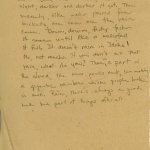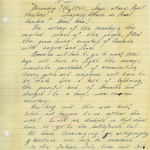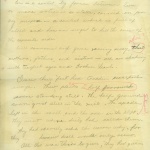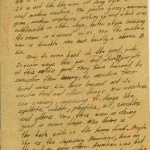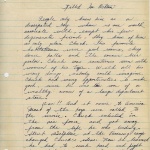A Young American with a Japanese Face (essay)
Early first-person account of the issues facing Nisei written by an anonymous Nisei and published in the popular anthology From Many Lands , edited by Louis Adamic , in 1940. The account was based on the life of Charles Kikuchi and adapted by Adamic from Kikuchi's writings.
Adamic (1898–1951) was a well-known writer whose books and articles highlighted the contributions and experiences of immigrants and their children. An immigrant from Slovenia himself, Adamic had come to the U.S. in 1913 and his two 1930s memoirs became best-sellers. He planned a series of books in the Nation of Nations series, that would tell the story of the various ethnic groups that made up America. For the first book of the series, From Many Lands , he sought to include a Nisei story. He sought advice from his friends, including writer Mary Oyama , and corresponded with newspaper editors, Shuji Fujii of the leftist Dohō weekly, published in Los Angeles and James Sakamoto of the Japanese American Courier . He was introduced to Kikuchi in 1939 by Alfred G. Fisk, one of Kikuchi's professors at San Francisco State College and ultimately decided to use Kikuchi's somewhat unusual story.
The bulk of the narrative is based on a 26 page single spaced letter Kikuchi wrote to Adamic. The story takes us from his difficult childhood—he is placed in an orphanage at age eight—to his becoming a top student in high school. Upon graduation, he finds himself on the one hand unable to find a job or housing in San Francisco due to racial discrimination yet estranged and even hostile to the Japanese community and culture on the other. He decides to attend San Francisco State College, supporting himself as a houseboy to a white family. At school he comes out of his shell to eventually embrace his culture and history, make amends with his family, and comes to see his problems as paralleling those of all Nisei. But at the end, he finds himself a college graduate unable to land a job, unable to even join the armed forces, wondering what his place and future will be in America. Though the biographical details are generally faithful to what Kikuchi wrote, Adamic took great liberties in rewriting or creating entirely new passages, especially those that expound on the meaning of the author's experiences and his visions of America. Though Adamic offered to credit Kikuchi's contribution, Kikuchi chose to remain anonymous, though his identity was well-known by members of the Nisei intelligentsia.
From Many Lands and the Kikuchi/Adamic essay were well received in the Japanese American press and widely read by a mainstream audience, undoubtedly serving as an introduction to the Japanese American experience for many. [1] A social worker and chronicler of the Japanese American experience later in life, Kikuchi had mixed feelings about the essay and noted that some passages attributed to him created problems for him in the Gila River , Arizona, concentration camp. [2]
For More Information
Anonymous. "A Young American with a Japanese Face." In From Many Lands . Edited by Louis Adamic. New York: Harper and Bros., 1940. 185-234.
Briones, Matthew M. Jim and Jap Crow: A Cultural History of 1940s Interracial America . Princeton: Princeton University Press, 2012.
Ichioka, Yuji. "'Unity Within Diversity': Louis Adamic and Japanese Americans." In Before Internment: Essays in Prewar Japanese American History . Ed. Gordon H. Chang and Eiichiro Azuma. Stanford: Stanford University Press, 2006. 127–52.
Footnotes
- ↑ In his essay on Adamic, Yuji Ichioka summarizes community response to the Kikuchi/Adamic piece. See Yuji Ichioka, "'Unity Within Diversity': Louis Adamic and Japanese Americans," in Before Internment: Essays in Prewar Japanese American History (Ed. Gordon H. Chang and Eiichiro Azuma, Stanford: Stanford University Press, 2006), 138–39.
- ↑ Matthew M. Briones, Jim and Jap Crow: A Cultural History of 1940s Interracial America (Princeton: Princeton University Press, 2012), 64–65.
Last updated July 14, 2020, 7:40 p.m..

